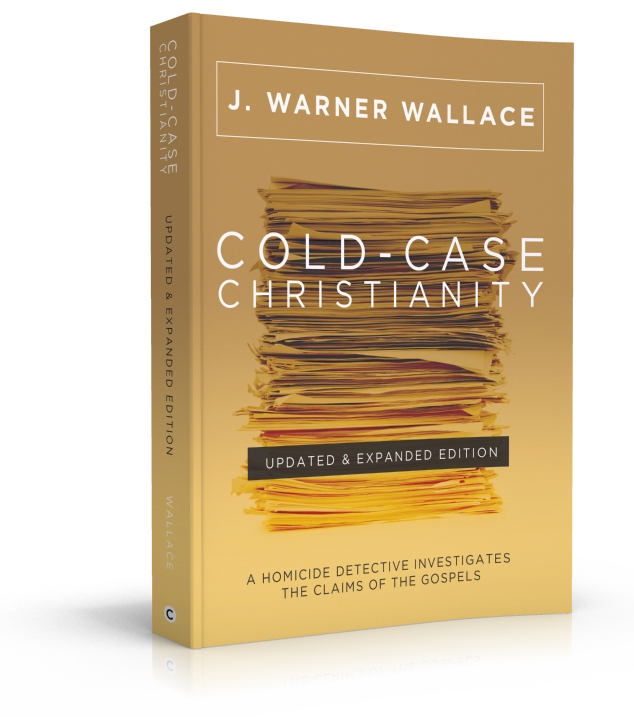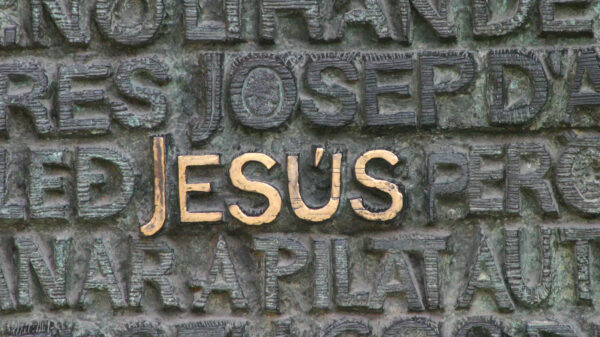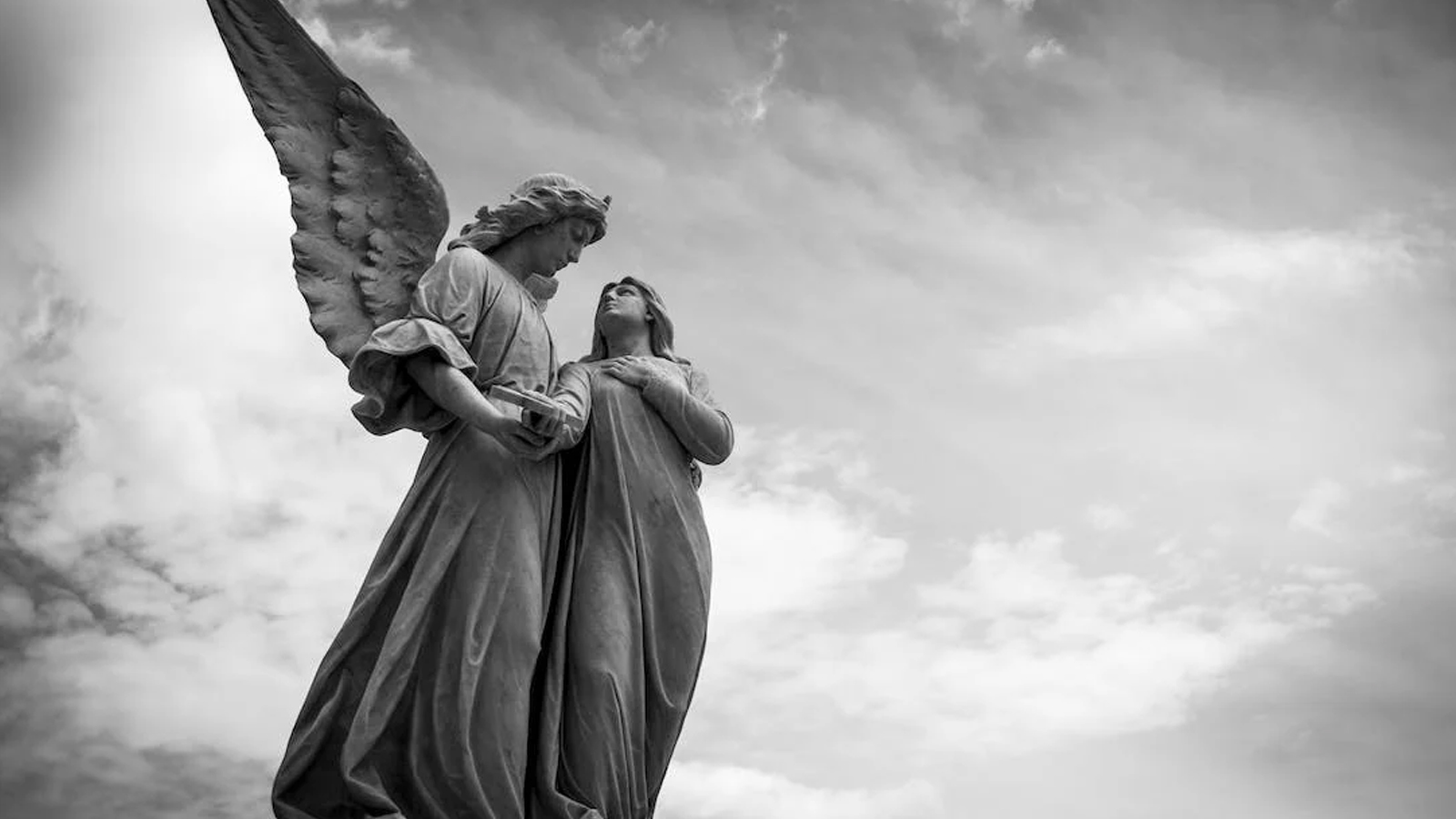This week I’m examining several alleged Bible “contradictions” offered by skeptics as evidence against the reliability of the Gospel eyewitness accounts. In my prior post I investigated the variations between the reports of the sign over Jesus’ cross, and shared several investigative principles I use when examining eyewitness testimony. I’ve also written a longer article describing ten principles to consider when examining alleged bible contradictions. Today, I’d like to address the number of angels who appeared to the women at the tomb of Jesus. This is yet another apparent “contradiction” in the Resurrection account and it is often cited by those who deny the claims of the New Testament. How many angels appeared to the women who came to Jesus’ tomb on Resurrection Sunday? One? Two? It seems to depend on the account. Matthew and Mark mention only one. Luke and John seem to mention two. Is there a contradiction here, and if so, does it invalidate the reliability of the Resurrection accounts? Let’s begin by examining the descriptions offered in the New Testament:
Matthew 28:1-8
Now after the Sabbath, as it began to dawn toward the first day of the week, Mary Magdalene and the other Mary came to look at the grave. And behold, a severe earthquake had occurred, for an angel of the Lord descended from heaven and came and rolled away the stone and sat upon it. And his appearance was like lightning, and his clothing as white as snow. The guards shook for fear of him and became like dead men. The angel said to the women, “Do not be afraid; for I know that you are looking for Jesus who has been crucified. He is not here, for He has risen, just as He said. Come, see the place where He was lying. Go quickly and tell His disciples that He has risen from the dead; and behold, He is going ahead of you into Galilee, there you will see Him; behold, I have told you.” And they left the tomb quickly with fear and great joy and ran to report it to His disciples.
Mark 16:1-8
When the Sabbath was over, Mary Magdalene, and Mary the mother of James, and Salome, bought spices, so that they might come and anoint Him. Very early on the first day of the week, they came to the tomb when the sun had risen. They were saying to one another, “Who will roll away the stone for us from the entrance of the tomb?” Looking up, they saw that the stone had been rolled away, although it was extremely large. Entering the tomb, they saw a young man sitting at the right, wearing a white robe; and they were amazed. And he said to them, “Do not be amazed; you are looking for Jesus the Nazarene, who has been crucified. He has risen; He is not here; behold, here is the place where they laid Him. But go, tell His disciples and Peter, ‘He is going ahead of you to Galilee; there you will see Him, just as He told you.’” They went out and fled from the tomb, for trembling and astonishment had gripped them; and they said nothing to anyone, for they were afraid.
Luke 24:1-10
But on the first day of the week, at early dawn, they came to the tomb bringing the spices which they had prepared. And they found the stone rolled away from the tomb, but when they entered, they did not find the body of the Lord Jesus. While they were perplexed about this, behold, two men suddenly stood near them in dazzling clothing; and as the women were terrified and bowed their faces to the ground, the men said to them, “Why do you seek the living One among the dead? He is not here, but He has risen. Remember how He spoke to you while He was still in Galilee, saying that the Son of Man must be delivered into the hands of sinful men, and be crucified, and the third day rise again.” And they remembered His words, and returned from the tomb and reported all these things to the eleven and to all the rest.
John 20:1-8
Now on the first day of the week Mary Magdalene came early to the tomb, while it was still dark, and saw the stone already taken away from the tomb. So she ran and came to Simon Peter and to the other disciple whom Jesus loved, and said to them, “They have taken away the Lord out of the tomb, and we do not know where they have laid Him.”
In evaluating alleged “contradictions” of this nature, I think it’s important to remember a few overarching principles related to eyewitness testimony (I describe many of these principles in my first book, Cold-Case Christianity). Even though I accept and affirm the inerrancy of Scripture, inerrancy is not required of reliable eyewitnesses. In fact, I’ve never had a completely inerrant eyewitness in all my years as a homicide detective. In addition, I’ve never had a case where two witnesses have ever agreed completely on the details of the crime. Eyewitness reliability isn’t dependent upon perfection, but is instead established on the basis of a four part template I’ve described repeatedly in my book and on my website.
But beyond these generalities, much can be said specifically about the variations between the descriptions of the angels. In the many supplemental interview reports I’ve read over the years as a cold case detective, I’ve come to learn an important principle: Eyewitness accounts are largely dependent upon the questions asked by the interviewer. I’ll never forget one example of this. In a case from 1981, I reviewed three reports written by three different detectives who interviewed three separate witnesses. Two of these detectives had since passed away, so I couldn’t ask them about their interview process. But I observed an apparent contradiction in the witness accounts. One of the witnesses mentioned nothing about an important detail of the crime. It seemed to be a glaring discrepancy. When I located the witness and re-interviewed her, I asked her about her old observations and she immediately included the missing component. I then asked her why she hadn’t told this to the original detective who interviewed her. She had a simple answer: “He never asked me!” The first detective never specifically asked about the issue, so the witness never offered the information. Eyewitness testimony is often shaped by the kinds of questions asked by the interviewer.
Something similar seems to be happening in the reports of the angels. Each author appears to be answering a different question, and the question under consideration guides the response, especially when it comes to the number of angels present at the tomb. Let’s begin here with a simple observation made by Norm Geisler in his book, When Critics Ask: “Matthew does not say there was only one angel. John [and Luke] say there were two, and wherever there are two there is always one; it never fails!” This simple truth must be kept in mind before we examine the details. In order for there to be a true contradiction here, Matthew or Mark would have to say there was only one angel. This was, of course, not the case. There were two angels at the tomb of Jesus, and neither account said there was only one. But why is there a difference at all? As I described earlier, it comes down to the questions each author was trying to address.
Matthew and Mark addressed one question while Luke and John addressed another. Each was focused on a particular issue and this guided their decision about what they reported. Matthew and Mark addressed the issue of the earthquake and the removal of the stone. Matthew wrote, “And behold, a severe earthquake had occurred, for an angel of the Lord descended from heaven and came and rolled away the stone and sat upon it.” What caused the earthquake? An angel came and rolled away the stone. From this point on, Matthew was singularly focused on this angel and what he told the women. Mark was similarly focused. He reported the women “…were saying to one another, ‘Who will roll away the stone for us from the entrance of the tomb?’ Looking up, they saw that the stone had been rolled away, although it was extremely large. Entering the tomb, they saw a young man sitting at the right, wearing a white robe; and they were amazed.” Once again the question under examination was: who rolled away the stone. The answer? One angel, and this angel became the focus of Matthew and Mark’s account.
Luke and John was addressing different concerns, however. While Luke, for example, also mentioned the rolling of the stone, he focused on the concerns the women had about the missing body: “And they found the stone rolled away from the tomb, but when they entered, they did not find the body of the Lord Jesus. While they were perplexed about this, behold, two men suddenly stood near them in dazzling clothing.” What were the women perplexed about? The fact they could not find the body of Jesus. Then they see two angels and the rest of the narrative was centered on their interaction with these angels. John was similarly fixated. John’s account is much less concerned with the interaction between the angels and the women. Instead it moves quickly from the grave scene to the report the women make to the disciples. But look at what the women reportedly said: “They have taken away the Lord out of the tomb, and we do not know where they have laid Him.” Once again they addressed the issue of how Jesus was assisted out of the tomb, and once again the description of the angels was plural.
When describing who rolled away the stone, the Gospel authors reported only one angel. When describing who helped Jesus from the tomb, the Gospel authors reported two angels. If I still had access to the eyewitnesses or their interviewers, I would definitely ask them to talk about the stone removal and the missing body in a more unified, consistent way, but like many of my cold cases, witnesses or interviewers are no longer available. But if I could ask why a particular element is missing (either a description of who rolled the stone or who helped Jesus from the tomb), I suspect the witness’ answer would be something akin to: “He never asked me!” Each author addressed different questions and didn’t see a need to unify their description to match the others. This lack of effort to make the accounts match is yet another evidence, in my view, of their reliability. As I said in my last post, when people have the opportunity to align their statements, yet still refuse to do so, I know I am getting the nuanced observations I need to properly investigate the case. The Gospel authors (and the early Church) certainly had the opportunity to change the descriptions to make sure they matched, but they refused to do so. As a result, we can have even more confidence in the reliability of these accounts. They display the level of variation I would expect to see if they were true, reliable eyewitness descriptions.
There were two angels at the tomb of Jesus. One rolled away the stone. Both helped Jesus from the tomb. The Gospel accounts describe the angels in response to the specific questions and actions under consideration. There is no contradiction in the New Testament accounts. The Gospel accounts describe the angels in response to the specific questions and actions under consideration. There is no contradiction in the New Testament accounts. Share on X

J. Warner Wallace is a Dateline featured cold-case homicide detective, popular national speaker and best-selling author. He continues to consult on cold-case investigations while serving as a Senior Fellow at the Colson Center for Christian Worldview. He is also an Adj. Professor of Christian Apologetics at Talbot School of Theology, Biola University, and a faculty member at Summit Ministries. He holds a BA in Design (from CSULB), an MA in Architecture (from UCLA), and an MA in Theological Studies (from Gateway Seminary).
































